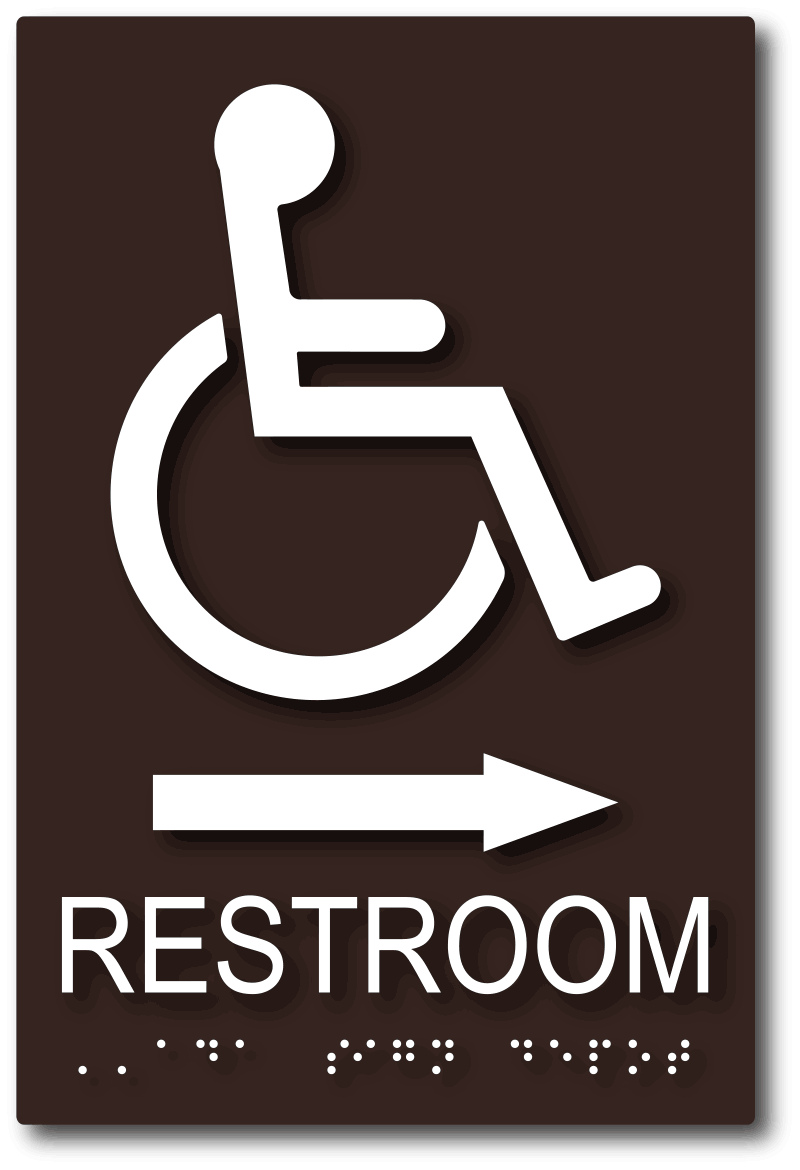Checking Out Creative Layouts for Efficient ADA Signs
Checking Out Creative Layouts for Efficient ADA Signs
Blog Article
Checking Out the Secret Functions of ADA Indications for Enhanced Ease Of Access
In the world of availability, ADA indications act as silent yet powerful allies, making sure that areas are navigable and inclusive for people with specials needs. By integrating Braille and tactile elements, these signs break obstacles for the aesthetically impaired, while high-contrast color pattern and legible fonts satisfy diverse visual needs. Their strategic placement is not approximate yet rather a calculated initiative to facilitate seamless navigating. Past these features exists a deeper story about the advancement of inclusivity and the ongoing commitment to developing fair spaces. What a lot more could these signs indicate in our quest of global access?
Importance of ADA Compliance
Making sure conformity with the Americans with Disabilities Act (ADA) is vital for promoting inclusivity and equal access in public areas and offices. The ADA, enacted in 1990, mandates that all public centers, employers, and transportation solutions fit people with handicaps, guaranteeing they enjoy the very same legal rights and chances as others. Compliance with ADA requirements not only fulfills lawful responsibilities but also enhances a company's credibility by demonstrating its dedication to variety and inclusivity.
One of the crucial elements of ADA compliance is the execution of accessible signs. ADA indications are developed to make sure that people with disabilities can quickly browse via buildings and spaces.
In addition, sticking to ADA guidelines can minimize the danger of lawful effects and prospective fines. Organizations that fail to adhere to ADA standards might encounter suits or charges, which can be both financially difficult and harmful to their public photo. Thus, ADA compliance is indispensable to fostering a fair atmosphere for everyone.
Braille and Tactile Components
The incorporation of Braille and tactile aspects into ADA signage embodies the concepts of ease of access and inclusivity. It is typically placed under the matching text on signage to guarantee that individuals can access the information without visual support.
Tactile elements prolong past Braille and consist of raised personalities and symbols. These components are created to be noticeable by touch, permitting people to recognize room numbers, restrooms, departures, and various other critical areas. The ADA establishes details guidelines relating to the size, spacing, and placement of these responsive elements to maximize readability and ensure consistency throughout different settings.

High-Contrast Color Plans
High-contrast color design play an essential function in enhancing the exposure and readability of ADA signage for individuals with visual impairments. These schemes are crucial as they maximize the difference in light reflectance between message and history, ensuring that indications are quickly discernible, also from a distance. The Americans with Disabilities Act (ADA) mandates the usage of specific color contrasts to fit those with limited vision, making it a vital aspect of conformity.
The effectiveness of high-contrast shades depends on their ability to stick out in numerous illumination conditions, including poorly lit settings and locations with glare. Typically, dark message on a light history or light message on a dark history is utilized this post to attain optimal contrast. For instance, black message on a white or yellow background gives a plain visual difference that aids in fast recognition and comprehension.

Legible Fonts and Text Size
When thinking about the style of ADA signs, the choice of clear typefaces and proper text dimension can not be overstated. These aspects are crucial for making sure that signs are available to people with aesthetic impairments. The Americans with Disabilities Act (ADA) mandates that fonts need to be sans-serif and not italic, oblique, script, very attractive, or of uncommon type. These requirements help make sure that the text is conveniently readable from a distance and that the characters are distinct to varied audiences.
According to ADA standards, the minimal text height ought to be 5/8 inch, and it ought to enhance proportionally with seeing distance. Uniformity in message dimension contributes to a natural aesthetic experience, aiding people in browsing atmospheres efficiently.
Additionally, spacing between letters and lines is essential to readability. Adequate spacing stops personalities from appearing crowded, boosting readability. By sticking to these criteria, developers can dramatically improve availability, ensuring that signage serves its intended function for all people, no matter their aesthetic capabilities.
Effective Placement Strategies
Strategic positioning of ADA signs is crucial for taking full advantage of availability and ensuring conformity with lawful criteria. ADA standards state that indications ought to be placed at an elevation in between 48 to 60 inches from the ground to ensure they are within the line of sight for both standing and seated people.
Additionally, indicators need to be placed surrounding to the latch side of doors to permit simple identification prior to entrance. Consistency in indication placement throughout a center enhances predictability, minimizing confusion and boosting general customer experience.

Final Thought
ADA indications play a crucial function in promoting accessibility by integrating features that deal with the needs of individuals with handicaps. These components jointly promote an inclusive atmosphere, underscoring the value of ADA conformity in making sure equal access for all.
In the realm of access, ADA indicators offer as quiet yet powerful allies, ensuring that areas are accessible and inclusive for individuals with handicaps. The ADA, established in 1990, mandates that all public facilities, employers, and transport solutions fit individuals with handicaps, ensuring they delight in the same civil liberties and chances as others. ADA Signs. ADA signs are designed to make certain that individuals with handicaps can quickly navigate via buildings and spaces. ADA standards state that indicators need to be placed at an elevation try this site between 48 to 60 inches from the ground to ensure they are within the line of view for both standing and seated individuals.ADA indicators play an important duty in promoting access by integrating features that attend to these details the needs of individuals with disabilities
Report this page